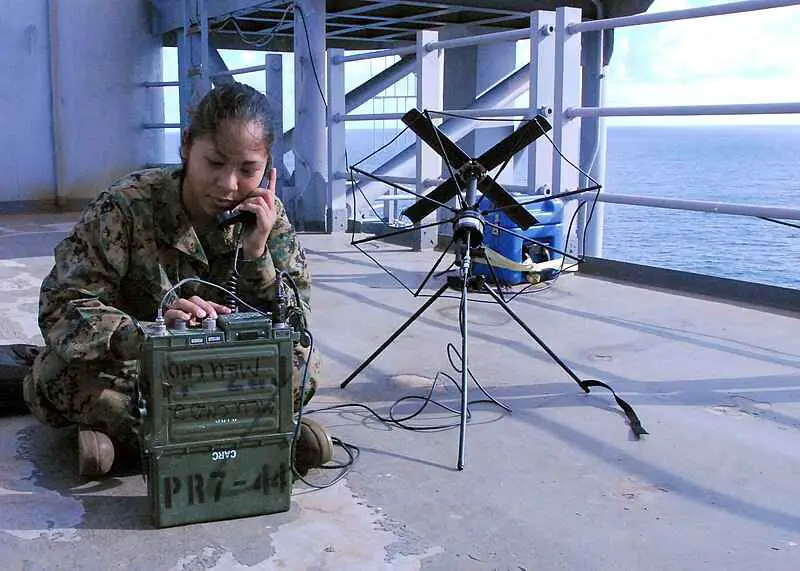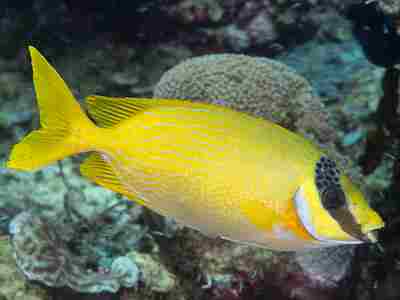5 Uses of Infrared Waves Explained
Uses of infrared waves are; thermal imaging, autoimmune disease treatment, infrared astronomy, wireless short-range communication and cosmetic radiotherapy.
This article discusses the uses of infrared waves, as follows;
1). Thermal Imaging (as one of the Uses of Infrared Waves)
Infrared waves are used in thermal imaging to reveal details about objects and features in a given environment. This application is also referred to as infrared imaging or thermography.
Basically, thermal imaging works by using a sensor-equipped camera to detect infrared waves that are emitted by a given object, and record the observed emissions in visual format. The records are usually either in still-image form, called thermograms, or as infrared video records.
Thermal imaging is useful for revealing details in objects, environments or phenomena that cannot be easily observed using visible light photography. An example of these details are those of nocturnal animal activities during night-time [5].
In addition to providing visual, geometric data, thermal imaging can also provide information on the contrast in thermal energy between one object or zone, and another [4]. This contrast is usually seen as differences in coloration that reflect varying levels of infrared heat emission.
Such details on heat emission differences can reveal significant information about the properties of objects such as their composition, texture; and for living organisms; information on metabolism and health conditions can be extracted.
Thermal imaging with infrared can be used in environmental monitoring, with respect to concepts and projects in ecosystem protection, security management, resource conservation and environmental remediation, among others.

2). Autoimmune Disease Treatment
Infrared saunas help in the treatment of autoimmune diseases, as an important physio-therapeutic measure, because they reduce inflammation, reduce stress, relief muscle spasms, and facilitate detoxification.
An example of an autoimmune disease that is treated using both near- and far-infrared (NIR and FIR) is rheumatoid arthritis (RA) [2].
Controlled exposure to infrared radiation improves body metabolism, which reflects in optimized blood circulation, and lower rates of toxin build-up.
Infrared radiation reduces inflammation in the body by up to 35%, by supporting the body's immune system in its response to harmful toxins and microbes [1].
Diseases that reduce the functioning of the body's neurological system; called neurodegenerative diseases, can also be treated using far, near, and red infrared radiation, in a process called photobiomodulation [7].
3). Infrared Astronomy (as one of the Uses of Infrared Waves)
Another use of infrared waves is in the observation and study of cosmological features like planetary bodies, asteroids, and stars. The field in which this application is implemented is known as infrared astronomy.
It must be observed here that infrared astronomy is only an advanced form of thermal imaging, as it involves the detection of infrared heat emissions from bodies in outer space.
Astronomers detect infrared waves in outer space by using telescopes equipped with infrared sensors that are similar to those in short-range thermal cameras.
These telescopes highlight the differences in emitted heat in various zones of outer space, and the visual data derived can be used to predict the characteristics of celestial bodies like their composition, origin, internal and external temperature, and surface texture.
For the celestial bodies themselves, most of them possess infrared radiation as a result of absorption of background radiation, and from their own internal processes.
Infrared astronomy is very crucial to the advancement of space exploration in the twenty-first century; because it enables scientists to gain knowledge on outer space features that cannot yet be physically explored using spacecrafts.
4). Wireless Short-Range Communication
Short range communication using infrared is a type of wireless communication that mostly involves smart devices, IoT networks and remote control systems.
It is called 'short-range' because its areal coverage is much smaller than that used in telecommunications for cellular networks, radio and television broadcasting.
Short range communication devices include interconnected sensors, total stations for surveying, remote controllers for electronic devices, and Single Channel Ground and Airborne Radio System (SINCGARS) used by the military for short-range voice communication.
Infrared radiation is suitable for short range communication because infrared waves are pervasive; can travel contactlessly through space, and have shorter wavelength than radio waves which are used in long-range communication.

5). Cosmetic Radiotherapy (as one of the Uses of Infrared Waves)
Infrared is used in beauty and cosmetic therapy as a skin treatment material, because it improves blood circulation and reverses aging as well as facilitates detoxification of the skin.
The benefits of infrared skin treatment method include the fact that it is non-invasive [3], and poses little to no risk of mutagenesis, since infrared rays are non-ionizing.
An instance of the effectiveness of infrared skin treatment can be seen in spectroscopic application of infrared for facial treatment, whose results include; fibroblast-stimulation and collagen increase, both of which reduce wrinkles and improve skin texture, tone, resilience and clarity [6].
Studies also reveal that infrared radiation is useful in the treatment of ailments like breast cancer [8].
Conclusion
Uses of infrared waves are;
1. Thermal Imaging
2. Autoimmune Disease Treatment
3. Infrared Astronomy
4. Wireless Short-Range Communication
5. Cosmetic Radiotherapy
References
1). Aguida, B.; Pooam, M.; Ahmad, M.; Jourdan, N. (2021). "Infrared light therapy relieves TLR-4 dependent hyper-inflammation of the type induced by COVID-19." Commun Integr Biol. 2021 Sep 15;14(1):200-211. https://doi.org/10.1080/19420889.2021.1965718. (Accessed 5 April 2023).
2). Chen, X.; Zhang, H.; Zeng, W.; Wang, N.; Lo, H. H.; Ip, C. K.; Yang, L. J.; Hsiao, W. L. W.; Sin, W. M.; Xia, C.; Law, B. Y. K.; Wong, V. K. W. (2021). "Far infrared irradiation suppresses experimental arthritis in rats by down-regulation of genes involved inflammatory response and autoimmunity." J Adv Res. 2021 Sep 1;38:107-118. Available at: https://doi.org/10.1016/j.jare.2021.08.015. (Accessed 5 April 2023).
3). Cristiano, L. (2019). "Use of infrared-based devices in aesthetic medicine and for beauty and wellness treatments." Infrared Physics & Technology. Available at: https://doi.org/10.1016/j.infrared.2019.102991. (Accessed 5 April 2023).
4). Dutfield, S. (2022). "Infrared cameras: Invention and uses." Available at: https://www.livescience.com/infrared-camera. (Accessed 5 April 2023).
5). Lavers, C. R.; Franks, K.; Floyd, M.; Plowman, A. (2005). "Application of remote thermal imaging and night vision technology to improve endangered wildlife resource management with minimal animal distress and hazard to humans." Journal of Physics Conference Series 15(1):207. Available at: https://doi.org/10.1088/1742-6596/15/1/035. (Accessed 5 April 2023).
6). Lee, J. H.; Roh, M. R.; Lee, K. H. (2006). "Effects of infrared radiation on skin photo-aging and pigmentation." Yonsei Med J. 2006 Aug 31;47(4):485-90. Available at: https://doi.org/10.3349/ymj.2006.47.4.485. (Accessed 5 April 2023).
7). Muili, K. A.; Gopalakrishnan, S.; Meyer, S. L.; Eells, J. T.; Lyons, J. A. (2012). "Amelioration of experimental autoimmune encephalomyelitis in C57BL/6 mice by photobiomodulation induced by 670 nm light." PLoS One. 2012;7(1):e30655. Available at: https://doi.org/10.1371/journal.pone.0030655. (Accessed 5 April 2023).
8). Plaza, D.; Baic, A.; Lange, B.; Michalecki, Ł.; Ślosarek, K.; Stanek, A.; Cholewka, A. (2022). "The Use of Infrared Thermography in the Assessment of Thermal Reaction of Patients Treated with Radiotherapy after Breast-Conserving Procedures." Int J Environ Res Public Health. 2022 Oct 30;19(21):14187. Available at: https://doi.org/10.3390/ijerph192114187. (Accessed 5 April 2023).





